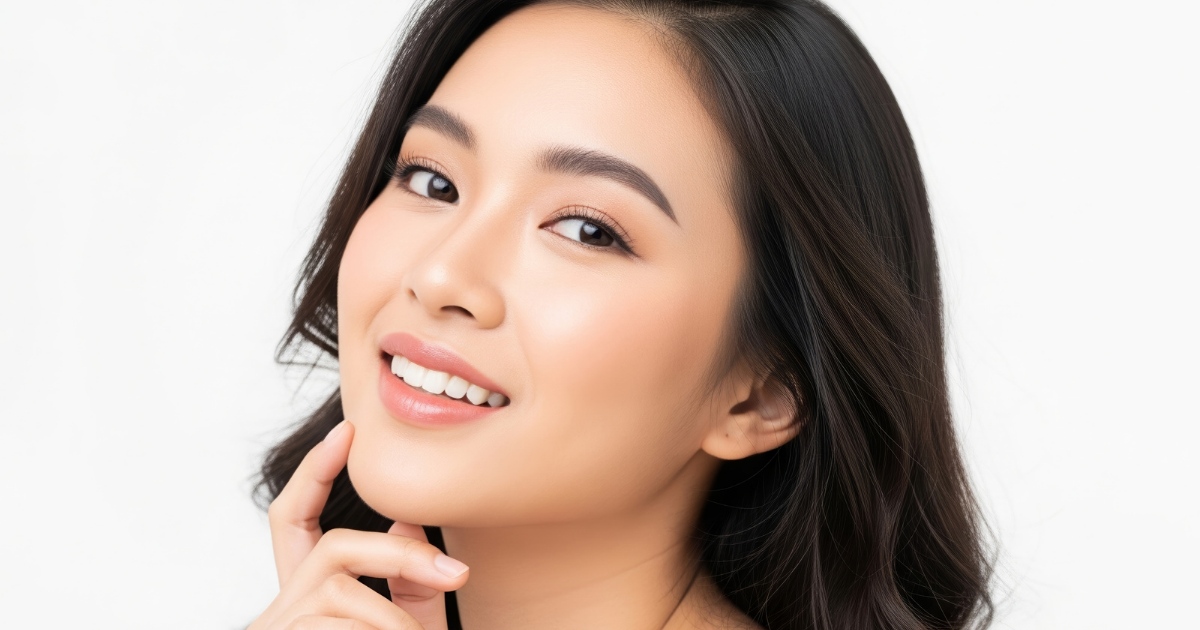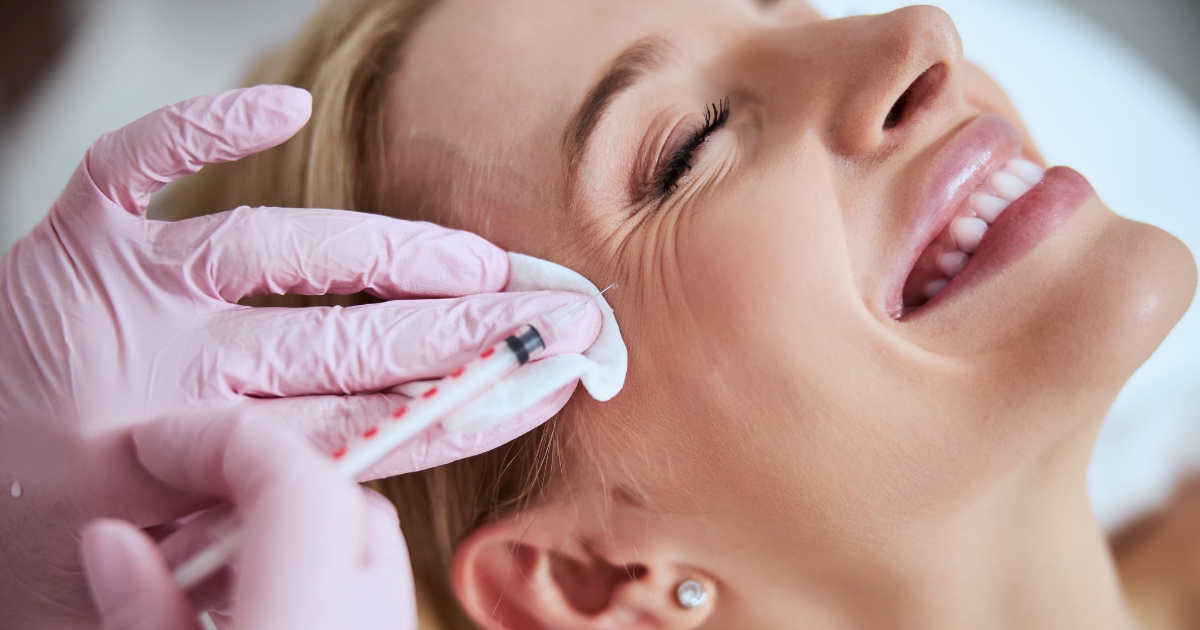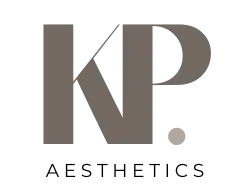
Botox for Crow’s Feet: Is It Your Best Option, or Are There Alternatives?
Tiny lines that fan from the outer corners of your eyes can tell stories of laughter and expression, yet they may also make you look tired or older than you feel. These lines, commonly called crow’s feet, show up for many reasons, including facial movement, sun exposure, and natural collagen changes with age.
While neuromodulators like Botox and Dysport can soften the motion that causes crow’s feet, these treatments do not address every concern. Deeper creases at rest, thin or crepey skin, and mild laxity near the eyes may benefit more from a combination of modalities. This guide walks you through how Botox and crow’s feet solutions compare, what each treatment can and cannot do, and how to choose the right path for your goals.

Understanding Crow's Feet: Why They Form and Why They Bother Us
Crow’s feet are wrinkles radiating from the eyes’ outer corners. They often begin as faint lines that appear only when you smile or squint, then gradually become visible even when your face is at rest. To understand why different treatments help, it is useful to know the two main types:
- Dynamic wrinkles: These form from repeated muscle movement. Smiling, laughing, and squinting engage the orbicularis oculi muscle around the eyes, which folds the skin into lines.
- Static wrinkles: Over time, lines can remain even when the face is still. Sun exposure, reduced collagen and elastin, dehydration, and skin quality changes contribute to static lines.
People often consider treating crow’s feet because the eye area draws attention in photos and in person. This thin skin is expressive, so texture changes and fine lines can stand out. The good news is that many modern options may support a smoother, more refreshed look without dramatic changes.
The goal is not to erase every line. The best outcomes often keep some natural expression while softening the etching and texture that feels distracting. That balance comes from choosing the right tool for the right cause.
Botox for Eye Wrinkles: How They Deliver Smoothness
Neuromodulators like Botox target communication between nerves and muscles. A small amount placed in precise points around the outer eye can relax the orbicularis oculi muscle. When this muscle contracts less forcefully, the skin can look smoother during facial movement. Consider Botox for crow’s feet if you:
- Have strong expression lines that crinkle when you smile or squint.
- See early to moderate crow’s feet that mostly show with movement.
- Want quick visits and minimal downtime.
- Are comfortable with repeating treatments a few times per year.
With consistent sessions, some lines may also appear softer at rest. Some people may notice shorter or longer-lasting results depending on metabolism, dose, and treatment consistency.
Tailored Treatments for Natural-Looking Results
Customization matters. The eye area is delicate, and too much relaxation can feel unnatural. Experienced injectors tailor placement and dosage to your muscle strength, eye shape, and goals. A light touch may create a gentle softening. Higher doses may be considered for stronger muscle activity, but care is taken to maintain natural expression and preserve function.
What patients appreciate:
- Quick appointments: Treatment often takes minutes.
- Minimal downtime: Most people return to their day after injections.
- Predictable softening: Expression lines around the eyes often respond in a noticeable yet natural way.
What neuromodulators do not do:
- They do not add volume to deeper creases.
- They do not resurface or tighten the skin to improve crepe-like texture.
- They are temporary and typically last about 3 to 4 months.
Think of neuromodulators as part of a broader plan. If static lines show when your face is relaxed, or if the skin looks thin or crepey, combining injections with a skin-directed treatment may enhance your results.
Understanding Botox Crow's Feet Injection Sites
Injection points are typically placed in small amounts along the outer portion of the orbicularis oculi. The goal is to reduce the lateral pull that crinkles the skin without affecting lower eyelid function or oddly elevating the cheek.
Placement is assessed while you smile and relax so your provider can identify how your muscles contract. Precise depth and spacing reduce the risk of unwanted effects. Ideal candidates have good skin quality and lines that are mostly dynamic.
Beyond Botox: Advanced Treatments for Comprehensive Eye Rejuvenation
Not all crow’s feet are driven by muscle activity alone. Skin quality, sun damage, and volume changes can deepen lines and create a tired look. That is where complementary options may help.
Think of a spectrum of tools that target different layers of the skin. Some focus on collagen stimulation for fine lines and texture. Others restore subtle fullness or encourage firming in the tissue beneath the skin.
If dynamic wrinkles are your main concern, neuromodulators may be a strong first step. If static lines, crepey texture, or laxity are noticeable, pairing options may create a more complete result. Below are common modalities that can be used alone or in combination to refresh the eye area.
Dermal Fillers: Adding Volume and Softness Around the Eyes
When deeper lines persist at rest, volume loss may be part of the picture. Carefully placed dermal filler can soften etched-in lines adjacent to the crow’s feet and support a smoother transition from the cheek to the outer eye. The goal is subtle and natural. With conservative placement, fillers can minimize shadowing and improve how light reflects across the area.
Who Should Get Dermal Filler for Crow’s Feet?
Selecting the best filler for crow’s feet depends on your anatomy and skin thickness. Softer, flexible gels are often preferred near the eyes to blend naturally and move with expression. Not everyone is a candidate for filler here. Assessment of skin quality, eyelid structure, and underlying support is essential to choose the right product and placement.
What filler may help with:
- Static lines that remain when the face is relaxed.
- Gentle contour smoothing near the outer eye and upper cheek.
- Subtle support that complements neuromodulators.
What filler cannot do:
- It does not relax muscle movement.
- It does not resurface skin texture.
Longevity varies by product and area. Many options may last several months to over a year. Careful technique reduces the risk of puffiness or irregularities. Providers often recommend a conservative plan, gradual building, and regular follow-ups.
Revitalize Skin Texture: Laser & Light Therapies for Fine Lines
Laser and light treatments can improve fine lines by stimulating new collagen and addressing sun damage that accelerates skin aging. Options like broadband light and fractional hybrid lasers may refine texture, brighten tone, and reduce the appearance of fine etching around the eyes. BBL and HALO lasers focus on the skin itself rather than the underlying muscle.
What you may notice with a series of treatments:
- Smoother-looking skin with a more even tone.
- Diminished fine lines and crepe-like texture.
- A healthier, more luminous look as collagen remodeling unfolds.
These treatments require sun protection and a tailored plan for your skin type. Some sessions have minimal downtime, while others involve a few days of redness and flaking. The choice depends on how quickly you want changes, how much downtime you can accept, and your pigment pattern and vessels.
Microneedling & RF Microneedling: Tightening and Renewing the Skin
Microneedling creates precise micro-injuries that prompt collagen and elastin production. Over a series of treatments, skin may look smoother and more resilient. When radiofrequency energy is added, as in RF microneedling or platforms like Morpheus8, the heat delivered at controlled depths can further tighten and remodel tissue. This can be helpful for crepey skin and laxity, which contribute to crow’s feet.
Where these treatments shine:
- Improving overall texture and firmness.
- Softening fine lines that remain at rest.
- Supporting long-term collagen remodeling near the outer eye.
Expect a series approach. Results build gradually as the skin renews itself. Downtime can range from mild redness and sensitivity for 1 to 3 days with microneedling to slightly more with RF-based sessions. If dynamic lines are also present, you may layer these with neuromodulators.
Chemical Peels: Unveiling Smoother Skin Around Your Eyes
Chemical peels exfoliate the skin to reveal fresher, more even layers. Gentle peels may reduce dullness and refine the fine texture that exaggerates lines. More advanced peels can deliver deeper renewal when appropriate. Around the eyes, peels must be selected and applied carefully to respect the delicate skin.
Benefits you might see:
- Smoother surface texture and a more radiant look.
- Better absorption of supportive eye-area skincare.
- Enhanced results when combined with neuromodulators or lasers.
Dependent on peel strength, downtime can range from mild flaking to several days of visible peeling. Your provider can guide you to the right option based on your tolerance for recovery and your goals.
Ultherapy & Skin Tightening: Lifting and Firming for a Youthful Gaze
Ultrasound-based skin tightening may help when mild laxity is part of your concern. Treatments like Ultherapy can stimulate a firming response over several months by delivering energy to targeted depths. The effect is subtle, but it may improve the frame around the eyes and support smoother skin.
What to keep in mind:
- Results build gradually over 2 to 3 months or longer.
- Best for mild to moderate laxity, not significant excess skin.
- Can be combined with neuromodulators, fillers, or resurfacing to address multiple causes of lines.
Crafting Your Perfect Plan: Choosing the Best Treatment for Crow's Feet
Choosing the best treatment for crow’s feet means looking beyond a single option and into the cause of your lines. Your provider will consider:
- Skin Quality: Texture, thickness, hydration, and sun history.
- Depth and Pattern of Wrinkles: Dynamic, static, or a mix.
- Muscle Strength: How powerfully the orbicularis oculi contracts when you smile or squint.
- Anatomy: Eyelid position, cheek support, and brow dynamics.
- Goals and Tolerance: how subtle or dramatic you want the change to be, your schedule, budget, and downtime.
Combination therapy often achieves the most balanced result. Here are examples of thoughtful pairings:
- Neuromodulator + Laser or Light: Relax movement while refreshing texture and tone. This can help if you want both a smoother smile and healthier-looking skin.
- Neuromodulator + Microneedling or RF Microneedling: Reduce crinkling with Botox or Dysport and remodel crepey skin with collagen stimulation.
- Filler + Neuromodulator: Soften etched-in lines and support the outer eye while maintaining natural expression control.
- Peel + Neuromodulator: Strategic exfoliation to brighten and smooth, paired with movement control for dynamic lines.
- Ultherapy + Skin Resurfacing: Firm the framework and enhance surface smoothness for a more lifted, refined look.
There is no one-size-fits-all solution. Some patients do very well with neuromodulators alone, especially if lines appear primarily with movement. Others benefit from adding treatments that target texture, tone, or laxity. The best treatment for crow’s feet is the one that addresses your specific pattern of aging, matches your timeline, and respects your natural features.
Unlock Your Best Look: Schedule Your Personalized Consultation at KP Aesthetics
Botox is a proven choice for softening the movement lines that collect at the corners of your eyes. Still, it is not always the best answer by itself. Many people see their most natural-looking results when they pair neuromodulators with skin-focused treatments like lasers, microneedling, peels, or subtle volume support.
The right combination may smooth dynamic wrinkles, refine texture, and reinforce firmness so your eyes look bright and refreshed, not overdone. We invite you to ask questions, share your goals, and explore options that respect your features and schedule. If smoother, brighter eyes are on your wish list, consider booking a personalized consultation at KP Aesthetics to learn which approach could fit your needs and timeline. Your plan may be simple or layered, and it should always be tailored to you.
